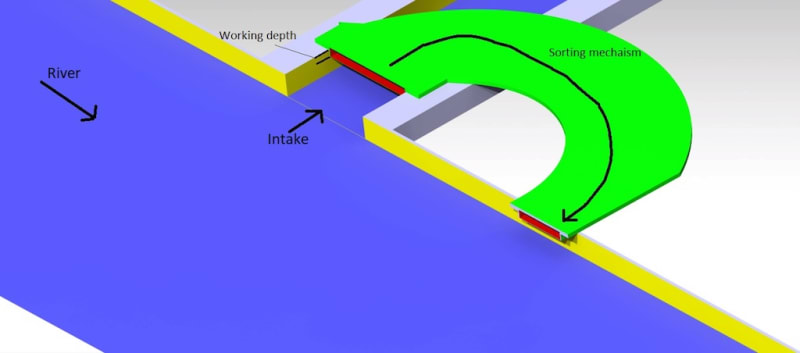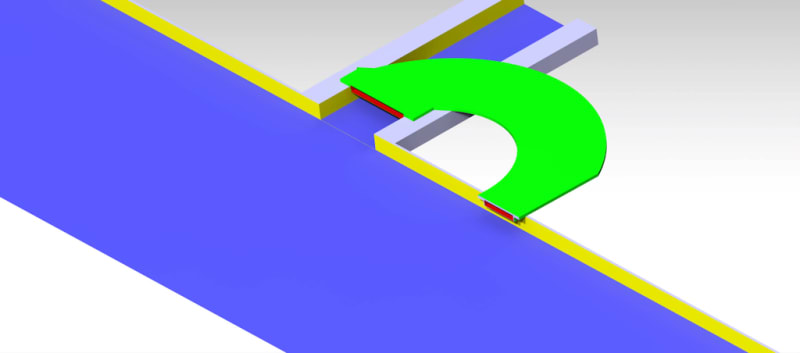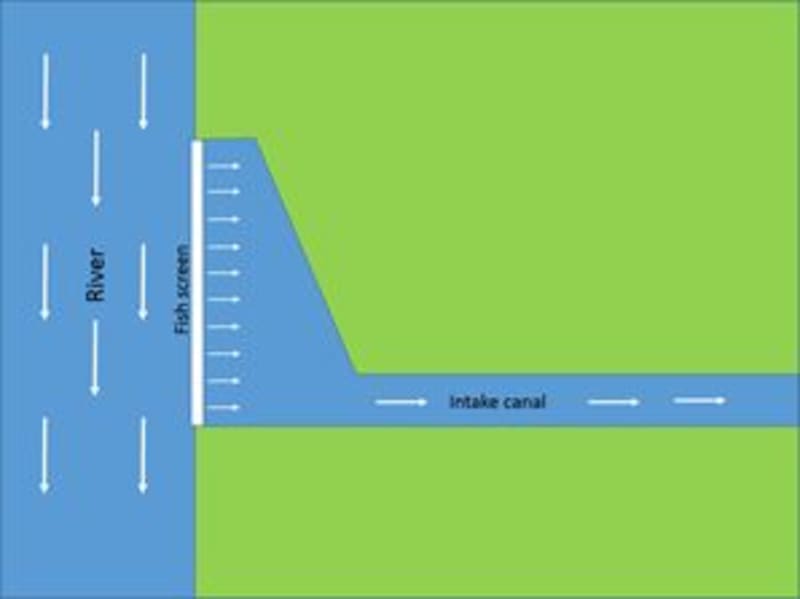This project is about building a new mechanism that can sort live aquatic animals in dams from intake canal without imposing any health risk on the animals and with lower operational cost than existing fish screen configuration to prevent them from damaging the power plant and themselves. This is done by using a sorting mechanism. Most aquatic species that exist in stream of dam are on the upper level of the water. So, this mechanism uses this advantage. As seen in the diagram, the green part which is the sorting mechanism is installed in the intake line. This structure can collect the upper part of the intake water and directed or discharge it to the river which is after the intake line. This collected and discharged water contains aquatic animals that travel in upper depth of the stream or intake line. Even if the fishes are not on upper level of the path we can make fish ladder mechanism to force the be at the top level. Since there is always water with the aquatic animals, the fishes will not die on luck of water. The mechanism does not require and running cost or maintenance cost because it works following the natural current without need of power. The depth can be automatically adjusted in any height depending up on water level, water intake need and many other factors calculations.
Technical Requirements
1. The mechanism separate target fish from diverted water while keeping fish in natural environment. This means since the fishes are going to be in the collected water at all time until they are discharged back into the river, they will be in their natural habitat.
2. The mechanism excludes one or more target fish species found in freshwater rivers and/or estuaries in the United States. This is because, fishes that travel in lower depth will not be collected and this aligns with the challenge requirement.
3. The mechanism excludes fish species which are large like fishes greater than 40 cm (>15.7 in). This is because; fishes that are large travel in lower death. And fishes that travel in lower depth will not be collected and this aligns with the challenge requirement.
4. The solution can be effective for any discharge within 2 ft3/s to 5,000 ft3/s (0.06-142 m3/s). The mechanism works best in lower width but can be effective for width of diversion up to 1,000 ft (305 m) long or any diameter of pipe from 0.5 to 20 ft (0.15 to 6.1m).
5. Must minimize mortality, harm, and stress to fish encountering fish exclusion devices.
6. The mechanism has no concern on debris, sediment, ice, and biofouling. This is because, there will not be any sediment in upper part of the intake, if there is any debris, it will go with the collected water and will be discharged back to the river. Note that the project is not about managing derbies but the live aquatic animals.
https://www.globalinnovationexchange.org/innovation/aquatic-animals-sorting-mechanism
Like this entry?
-
About the Entrant
- Name:Anteneh Gashaw
- Type of entry:individual
- Patent status:pending








